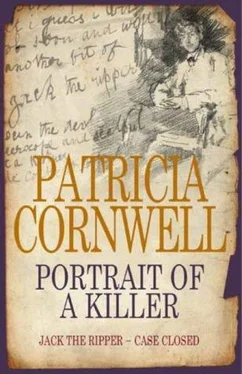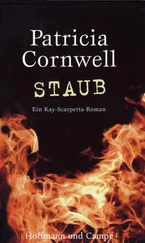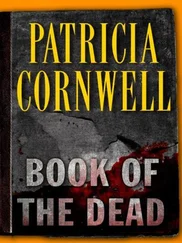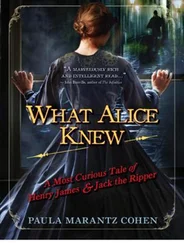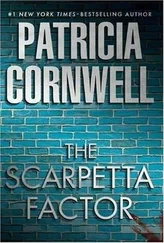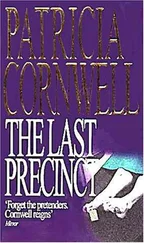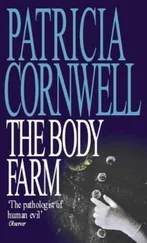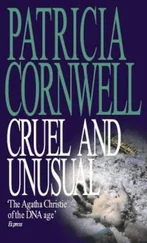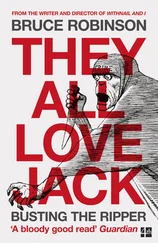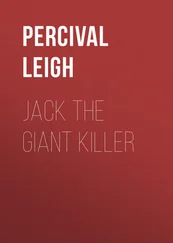Patricia Cornwell - Portrait Of A Killer - Jack The Ripper - Case Closed
Здесь есть возможность читать онлайн «Patricia Cornwell - Portrait Of A Killer - Jack The Ripper - Case Closed» весь текст электронной книги совершенно бесплатно (целиком полную версию без сокращений). В некоторых случаях можно слушать аудио, скачать через торрент в формате fb2 и присутствует краткое содержание. Жанр: Триллер, на английском языке. Описание произведения, (предисловие) а так же отзывы посетителей доступны на портале библиотеки ЛибКат.
- Название:Portrait Of A Killer: Jack The Ripper - Case Closed
- Автор:
- Жанр:
- Год:неизвестен
- ISBN:нет данных
- Рейтинг книги:5 / 5. Голосов: 1
-
Избранное:Добавить в избранное
- Отзывы:
-
Ваша оценка:
- 100
- 1
- 2
- 3
- 4
- 5
Portrait Of A Killer: Jack The Ripper - Case Closed: краткое содержание, описание и аннотация
Предлагаем к чтению аннотацию, описание, краткое содержание или предисловие (зависит от того, что написал сам автор книги «Portrait Of A Killer: Jack The Ripper - Case Closed»). Если вы не нашли необходимую информацию о книге — напишите в комментариях, мы постараемся отыскать её.
Portrait Of A Killer: Jack The Ripper - Case Closed — читать онлайн бесплатно полную книгу (весь текст) целиком
Ниже представлен текст книги, разбитый по страницам. Система сохранения места последней прочитанной страницы, позволяет с удобством читать онлайн бесплатно книгу «Portrait Of A Killer: Jack The Ripper - Case Closed», без необходимости каждый раз заново искать на чём Вы остановились. Поставьте закладку, и сможете в любой момент перейти на страницу, на которой закончили чтение.
Интервал:
Закладка:
When Ted Bundy decompensated, his crimes had escalated from spree killings to the orgy of the crazed multiple butcheries he committed in a Florida sorority house. He was completely haywire and he did not live in a world that would let him get away with it. Sickert lived in a world that would. He was not pitted against sophisticated law enforcement and forensic science. He traversed the surface of life as a respectable, intellectual gentleman. He was an artist on his way to becoming a Master, and artists are forgiven for not having a structured or "normal" way of going about their affairs. They are forgiven for being a little odd or eccentric, or a bit deranged.
Sickert's fractured psyche threw him into constant battles with his many selves. He was suffering. He understood pain as long as it was his own. He felt nothing for anyone, including Ellen, who was hurt far more than Sickert because she loved him and always would. The stigma of divorce was worse for her than it was for him, her shame and sense of failure greater. She would punish herself the rest of her life for tarnishing the Cobden name, betraying her late father, and proving a burden to those she loved. She had no peace, but Sickert did because he saw nothing wrong with anything he had done. Psychopaths don't accept consequences. They don't feel sorry - except for the misfortune they bring upon themselves and blame on others.
Sickert's letters to Blanche are masterly works of machination and give us a peek into the dark recesses of a psychopathic mind. Sickert first wrote, "Divorce granted yesterday, thank God!" To this he added, "[T]he first emotion when a thumb screw is removed is a sense of relief that makes one light-headed." He did not feel grief over the loss of Ellen. He was relieved to have one set of complications out of his life, and he felt more fragmented than before.
Ellen gave him a sense of identity. The marriage gave him a safe base in the endless game of tag he played. He always had her to run back to, and she always gave him what she could - and would continue to do so, even if it was secretly purchasing his paintings through Blanche. Sickert the showman didn't do well without an audience or a supporting cast. He was alone backstage in a dark, cold place, and he didn't like it. He did not miss Ellen the way she missed him, and the ultimate tragedy of Sickert is that he was damned to a life that would not allow physical or emotional intimacy. "At least you feel!" he once wrote Blanche.
Sickert's genetic aberrations and childhood traumas had found his fissures and chiseled him to pieces. One piece of him would give painting lessons to Winston Churchill, while another piece wrote a letter to the press in 1937 praising Adolf Hitler's art. One piece of Sickert was kind to his drug-addicted, weak brother Bernhard, while another piece thought nothing of appearing at the Red Cross hospital to sketch soldiers suffering and dying, and then ask for their uniforms since they wouldn't be needing them anymore.
One piece of Sickert could praise a fledgling artist and be very generous with his time and instruction, while another piece trashed Masters such as Cezanne and Van Gogh and wrote a lie in the Saturday Review with the intention of defaming the careers of Joseph Pennell and Whistler. One piece of Sickert fooled friends into thinking he was a lady's man, while another piece of him called women "bitches" - or in Ripper letters, "cunts" - and wrote them off as a lower order of life, and murdered and mutilated them and further degraded and violated them in his art. The
complexities of Sickert may very well be endless, but one fact about him is clearly etched: He did not marry for love.
But in 1911, he decided it was time to marry again. It was a decision he may have premeditated less than his crimes. His courtship was a blitz on one of his young art students described by Robert Emmons, Sickert's first biographer, as lovely and having a "swan neck." She apparently suffered great misgivings and jilted Sickert at the altar, deciding to marry someone better suited to her station in life.
"Marriage off. Too sore to come," Sickert telegraphed Ethel Sands and Nan Hudson on July 3, 1911.
Immediately, he turned his attention to another one of his art students, Christine Drummond Angus, the daughter of John Angus, a Scottish leather merchant who was sure Sickert was after his money. Money was a very good commodity but not the only need in Sickert's life. He had no one to take care of him. Christine was eighteen years younger than Sickert, and a pretty woman with a childlike figure. She was sickly and rather lame, having spent much of her life suffering from neuritis and chilblains - or inflammation of the nerves and painful, itchy swelling. She was intelligent and capable of museum-quality embroidery, and a very competent artist, but she did not know Walter Sickert personally.
They had never socialized outside the classroom when he decided to marry her. He overwhelmed her with telegrams and letters many times a day until the unexpected and excessive attention from her art instructor made her very ill and her family sent her away to rest in Chagford, Devon. Sickert was not invited to join her but got on the train and rode the entire way. Within days, they were engaged, much against her father's wishes.
Mr. Angus conceded to the engagement when he learned that the penniless artist had suddenly sold a large portrait to an anonymous buyer. Maybe Christine wasn't making such a bad decision after all. Sickert's anonymous buyer was Florence Pash, a patron and friend of Sickert's who wanted to help him out. "Marrying Saturday a certain Christine Angus," Sickert telegraphed Nan Hudson and Ethel Sands on July 26,1911. But, he added his bad news, the jeweler "would not take the wedding ring back" that Sickert had bought for the first art student he had pursued.
Christine and Sickert were married at the Paddington Registry Office, and began spending much of their time in Dieppe and ten miles away, in Envermeu, where they rented a house. When World War I broke out in 1914, they returned to London. Artistically, these were productive years for Sickert. He wrote numerous articles. His paintings reflect tension between couples that is enigmatic and powerful and made him famous.
During the early years of his marriage to Christine, he produced his masterpiece Ennui, he painted battle scenes, then returned to the music halls, going to the New Bedford "every bloody night." There were also those other works that show his sexually violent side. In Jack Ashore, a clothed man approaches a nude on a bed. In The Prevaricator, a clothed man leans over the foot of a wooden bedstead that is similar to Mary Kelly's and a rare departure from Sickert's typical iron bedstead. A form is in the bed, but we can't make it out clearly.
Christine's health continued to cause inconveniences for Sickert, and he wrote manipulative letters to his helpful lady friends. He claimed he was so pleased that he was "contributing to make one creature happier than she would otherwise have been." If only he could make more money, he adds, because he needed two servants to take care of his sick wife. "I can't leave my work amp; I can't afford to take her away to the country." He wished Nan Hudson would let Christine come and stay with her for a while.
After the war, the Sickerts moved to France, and in 1919 he took a fancy to a disused gendarmerie, or police station, on Rue de Douvrend in Envermeu. Christine paid 31,000 francs for the run-down barracks with its upstairs bedroom that had formerly been jail cells all on one side. Her new husband's responsibility was to fix up Maison Mouton, as it is still called, and get it ready for her while she stayed in London to settle certain matters and ship their furniture across the Channel. Intermittently, she collapsed in bed when her neuritis flared up, at one point so ill she was kept awake "for 45 nights… with drugs and infections, and even when the acute pain is gone, one can hardly move."
Читать дальшеИнтервал:
Закладка:
Похожие книги на «Portrait Of A Killer: Jack The Ripper - Case Closed»
Представляем Вашему вниманию похожие книги на «Portrait Of A Killer: Jack The Ripper - Case Closed» списком для выбора. Мы отобрали схожую по названию и смыслу литературу в надежде предоставить читателям больше вариантов отыскать новые, интересные, ещё непрочитанные произведения.
Обсуждение, отзывы о книге «Portrait Of A Killer: Jack The Ripper - Case Closed» и просто собственные мнения читателей. Оставьте ваши комментарии, напишите, что Вы думаете о произведении, его смысле или главных героях. Укажите что конкретно понравилось, а что нет, и почему Вы так считаете.
